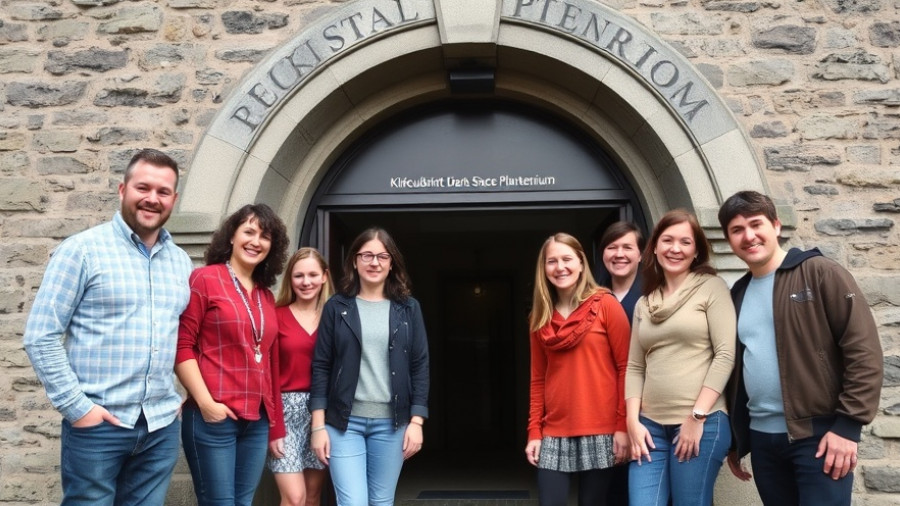
Engaging the Community in Astronomy: A Local Treasure
The Kirkcudbright Dark Space Planetarium is more than just a science center; it's a vibrant hub where the wonders of the cosmos meet community engagement. On October 15, 2025, the Planetarium had the esteemed pleasure of welcoming Professor Catherine Heymans, the Astronomer Royal for Scotland. Her visit brought a distinct spotlight to this hidden gem located in the historic Johnston School building, a charity dedicated to expanding people’s understanding of space and science.
Catherine Heymans: A Role Model in Astronomy
Professor Heymans, a renowned astrophysicist and the first woman to be named Astronomer Royal, expressed her admiration for the Planetarium's innovative approaches. She called the educational programs “first-rate,” highlighting the importance of enabling rural communities, especially schools, to experience the universe through hands-on learning. “It is centers like the Dark Space Planetarium who allow a diverse range of people to genuinely connect with the wonders of the cosmos,” she said, showcasing her dedication to democratizing access to astronomy for everyone, regardless of their background.
The Role of Supportive Funders in Thriving Initiatives
For community-focused institutions like the planetarium, financial sustainability presents ongoing challenges, especially amidst a landscape where many science centers are struggling financially. The Kirkcudbright Planetarium's success is largely attributed to the significant support from benefactors such as the Drax Foundation and Edina Trust. Their funding is not merely a financial lifeline; it’s a catalyst for exciting educational programs that inspire students and families alike, bringing curiosity and science education to the forefront.
Astrophysics: Bridging the Gap Between Science and Society
Heymans, whose groundbreaking research includes a large-scale map of dark matter, is acutely aware of the inherent bias in traditional scientific fields. With her high-profile role, she aims to challenge stereotypes surrounding who can be an astronomer. By sharing her own journey and promoting inclusivity in STEM, she fosters an environment ripe for aspiring scientists. “I hope I can turn around this tide of ‘science is boring’ and ‘science is not for girls’,” she said, reflecting her commitment to transforming the narrative around science for the next generation.
Looking Ahead: The Future of Kirkcudbright Planetarium
Undoubtedly, the Kirkcudbright Dark Space Planetarium is set to thrive as a beacon for community engagement and scientific inquiry. Its programs are instrumental in inspiring young minds while simultaneously offering valuable experiences to adults and families. As one of Scotland's first Dark Sky Parks, the Planetarium not only provides astrological education but also connects the community to the remarkable night sky.
Encouraging Local Investment in Space Education
Investing in local initiatives like the Kirkcudbright Dark Space Planetarium means investing in the future of community-driven science education. This center exemplifies how local organizations can create meaningful connections between science, education, and community development. Similar establishments around Dumfries provide vital spaces where knowledge is shared, and curiosity flourishes. It is crucial for local property buyers, sellers, and investors to appreciate and support such initiatives, as they enhance the cultural fabric of our communities and inspire the next generation.
As you explore opportunities in Dumfries and Galloway, consider supporting these local heroes who are making strides in science education. Their efforts not only inspire young minds but also contribute significantly to community growth and resilience.
 Add Row
Add Row  Add
Add 





Write A Comment